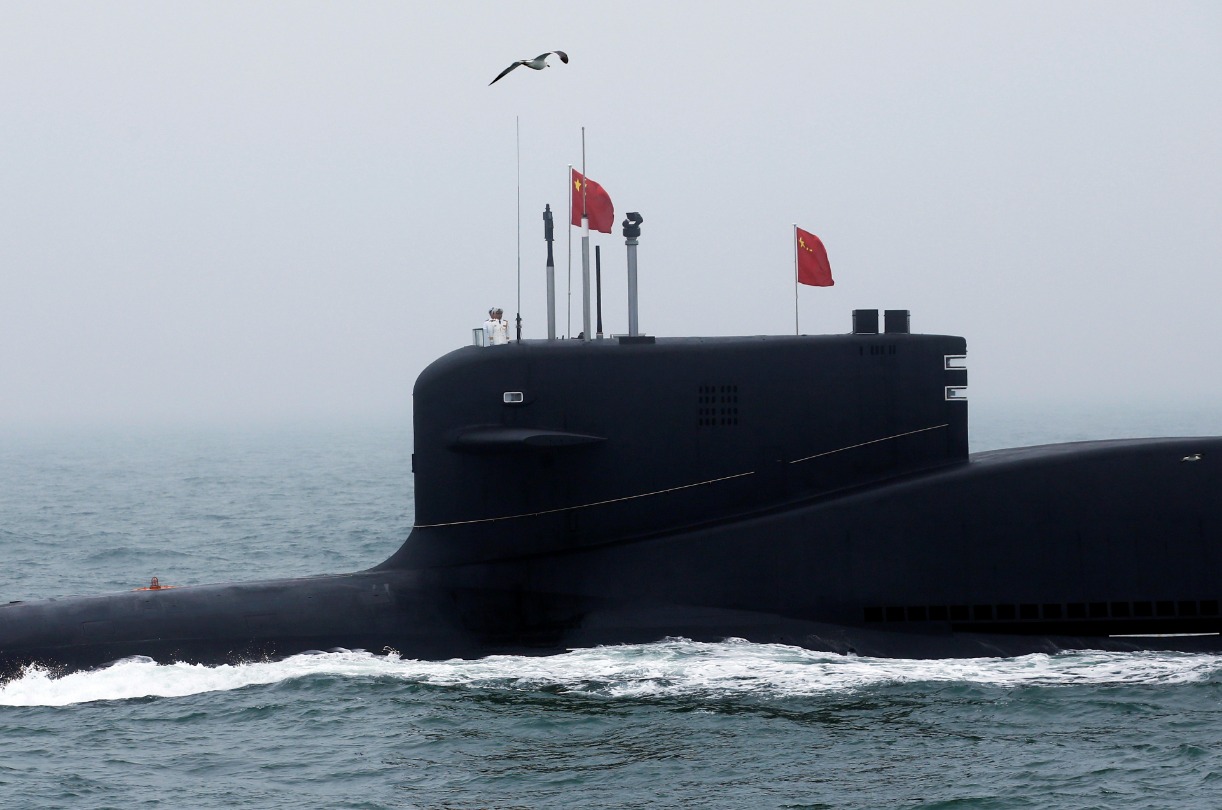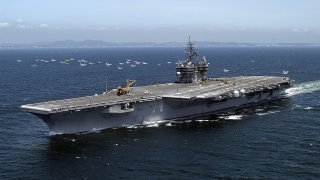Declassified: How a U.S. Navy Aircraft Carrier and Russian Nuke Sub Collided
The 1980s were marked by tense Cold War incidents, including a near-nuclear collision in 1984 between the USS Kitty Hawk and a Soviet Victor-class submarine, Petropavlovsk, in the Sea of Japan.
Summary and Key Points: The 1980s were marked by tense Cold War incidents, including a near-nuclear collision in 1984 between the USS Kitty Hawk and a Soviet Victor-class submarine, Petropavlovsk, in the Sea of Japan.

-The Soviet sub, likely gathering intelligence during U.S.-South Korean naval exercises, collided with the Kitty Hawk while surfacing.
-The incident, only declassified in 2017, raised fears of nuclear escalation. Today, as the U.S. faces a tripolar competition with China and Russia, the risk of similar incidents leading to conflict has increased, especially as Cold War-era safeguards have eroded or disappeared.
1984 Cold War Near-Miss: USS Kitty Hawk Collides with Soviet Sub
The 1980s was one of the most decisive decades in recent history. The Cold War was in its fourth decade and, according to some historians, that struggle was at its most tense. The world existed on a nuclear hair-trigger, and the two superpowers tested each other as they never had before.
From nuclear near-misses to tense standoffs at sea and in the air, the Cold War was very hot. The pop culture of the era was chock full of end of world-type scenarios. Great power conflict was on the mind.
Close calls and near-misses with advanced military platforms defined the decade.
A Near-Nuclear Incident
One such incident occurred in 1984. It involved the USS Kitty Hawk, one of America’s supercarriers, and a Soviet Victor-class attack submarine known as Petropavlovsk. The incident took place about 150 miles east of South Korea, during joint naval exercises with South Korean forces. Kitty Hawk was accompanied by eight escorts when, suddenly, the great carrier “ran over the stern of the submarine as it was surfacing,” according to a UPI report from the time.

Given the kind of naval exercises occurring between the U.S. and South Korean navies, it is likely Petropavlovsk was shadowing the warships in order to gather intelligence on U.S. naval capabilities.
Reports from the time indicate Kitty Hawk’s crew was aware of the threat of a Soviet submarine shadowing their flotilla. The crew claimed they were traveling in the Sea of Japan at 15 knots “with navigation lights on.” In other words, they were following the agreed-upon international rules governing safe seamanship on the high seas.
The Soviet sub crew, meanwhile, was intent on playing a game of “cat and mouse” with the American flotilla. Specifically, with Kitty Hawk. The U.S. Navy concluded that the Soviets were trying to test U.S. antisubmarine devices. When Petropavlovsk surfaced, it gouged the side of Kitty Hawk. Yet, Kitty Hawk’s crew was apparently more concerned about the safety of the Soviet submarine that crashed into them.
That’s because Petropavlovsk was a nuclear-powered submarine and there were some real concerns among the American side that the sub’s nuclear reactor had been compromised by the collision. The official U.S. Navy report details how Kitty Hawk attempted to contact the Soviet sub but their hails were ignored. The Americans assumed that the Soviet sub was seaworthy, though, because it continued along on its way.
This incident, which happened way back in 1984, was only declassified in 2017.
At the time, there were systems in place meant to mitigate the threat of unintended nuclear escalation. Today, the United States faces a tripolar competition between itself, the People’s Republic of China, and the Russian Federation.
Today’s Context
Today’s international environment is replete with opportunities for unwarranted escalation and unintended consequences. The systems that helped curb the risk of nuclear conflict in the Cold War have eroded or simply don’t exist anymore, making the prospect of war as a result of an incident such as the one that occurred between Petropavlovsk and Kitty Hawk in 1984 more likely.
Kitty Hawk was no stranger to near-misses during its service. In fact, in 2007, the Kitty Hawk was humiliated by a Chinese Song-class diesel-electric submarine that had gotten within firing range of the carrier while Kitty Hawk was on maneuvers. Once it was in firing range, the sub surfaced, and its crew appeared to mock the Americans.

One can anticipate more experiences like this on the increasingly crowded and contested high seas as America sails into this dynamic, multipolar threat environment.
Author Experience and Expertise: Brandon J. Weichert
Brandon J. Weichert, a National Interest national security analyst, is a former Congressional staffer and geopolitical analyst who is a contributor at The Washington Times, the Asia Times, and The-Pipeline. He is the author of Winning Space: How America Remains a Superpower, Biohacked: China’s Race to Control Life, and The Shadow War: Iran’s Quest for Supremacy. His next book, A Disaster of Our Own Making: How the West Lost Ukraine, is due October 22 from Encounter Books. Weichert can be followed via Twitter @WeTheBrandon.
All images are Creative Commons or Shutterstock.
From the Vault
Russia Freaked Out: Why the U.S. Navy 'Unretired' the Iowa-Class Battleships
Battleship vs. Battlecruiser: Iowa-Class vs. Russia's Kirov-Class (Who Wins?)


